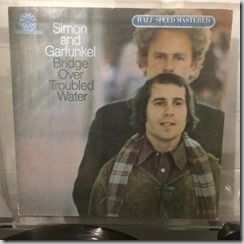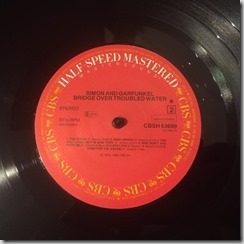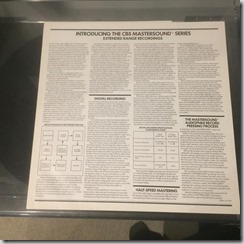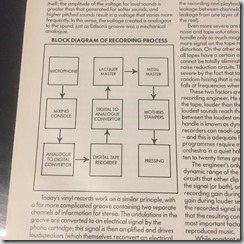A classic revisited
Simon and Garfunkel’s 1960s masterpiece revived in the 1980s as a part of CBS’ Mastersound series, featuring half speed mastering as an audiophile release. This was a huge upgrade from a heavily scratched original pressing that I had initially.
The Release
This album surely requires no introduction. There are some of Simon and Garfunkel’s best songs inscribed within the grooves on this LP.
My favourite track (by a long shot) is “The Boxer”, set in New York and so poetic in describing the life of a fighter and the knocks inflicted upon him by life, love and the Big Apple.
There’s plenty to wonder at, with “Bridge over Trouble Water” earning an almost choral feel to it. The upbeat “Baby Driver” follows “The Boxer” and creates excellent uplift on the B-side.
Technical
As this is a half speed master, expect some technical focus in this article. For starters, the CBS release includes a very detailed sheet on how the mastering was achieved:
So what exactly is a half-speed mastering, and why should you care?
Half-speed mastering is a vinyl cutting technique where the source is played back at half its normal speed while the turntable on the vinyl cutting lathe also runs at half-speed (16 2/3 to be precise).
Source: SuperDeluxeEdition
This means that when the master lacquer is cut, the cutting stylus has twice as long as normal to make the intricate incision. This is mean to lead to a “cleaner” transfer, a more accurate representation of the master recording. There should be more detail in the recording upon playback, and if you have a high end stylus this should become more apparent.
This handy illustration accompanies the sheet included with the release. This is my first half-speed master, so I had a fair amount of trepidation, which was rewarded upon playback.
My original pressing had a reasonably noticeable low playback level, which meant I had to increase the volume more than when listening to my other LPs. Not so with the half-speed recording.
The tracks positively “pop”, and the harmonies lift with a notable fidelity than on any previous version I’ve heard.
I think that despite the marketing hype, there’s value in looking at the half-speed mastered editions, especially if you find one for an album you enjoy.






I just bought the half speed Bridge album. Have not played it yet. I’m possibly the hugest Paul Simon fan on the planet . I have four to six pressing of every album from Bookends ( I own a UK mono 1A/2B with a CBS UK stamp inspected by on labels ) to Hearts and Bones . This half speed master is the only USA pressing I own, with the exception of a USA Bookends all the rest are UK for a reason. First off MONO Bookends blows away the stereo mix, regardless of what Paul thinks 🙂 Apparently he only heard Fakin It in mono,and didn’t like it, and to the best of my knowledge Paul has done everything to ensure that CBS will never made Mono pressings of Bookends ,and Bridge . With that said, there are a few singles off of Bridge on 45 in mono ,and yes they are dedicated mixes . Roy Halee deserves to be the third Simon ,Garfunkel ,and Halee . John Lennon has a great quip ,and dig at Paul in the sixties when Paul ( other Paul ) had written Peter and Gordon’s first couple of hits , he called the “ Peter and Garfunkel “ … Back to the point , I’ll play the 1/2 speed bridge tomorrow. Here is what it is up against three UK pressings ,one with first matrices mothers ,and stampers,and a Quad SQ . The Quad is mind boggling great ,and I just play it stereo, I have another Quad that is not technically appropriate, but in my opinion ( I’m a serious musician ) if you’re a musician ,and want to hear say just the two front channels, you’ll hear things like you’ve never heard them before . Simon ,and Halee are beyond meticulous,and it shows in the Quad ,and the dedicated mono Bookends ,which I doubt Paul has even heard . I must talk to him about that … I’ll be back with an update tomorrow. Ps, I’m changing my cartridge ,hence the delay …
Sorry for the delay in publishing your comments – would be curious to know what turntable & kit you’re using and to find out how the playback went.